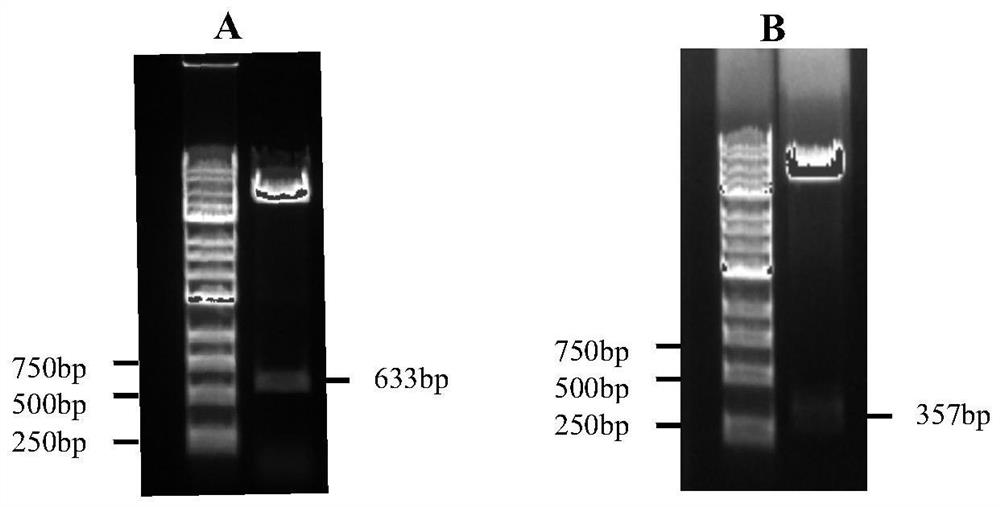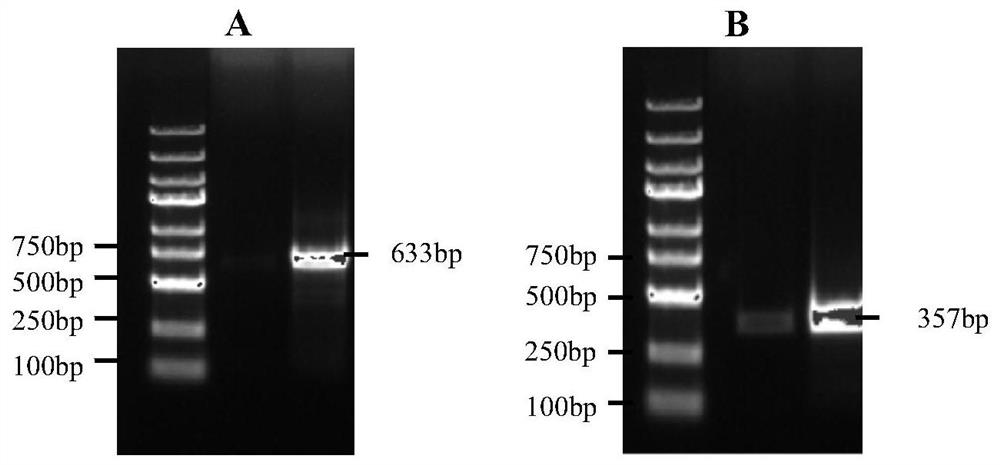Cell strain for expressing HLA-G isomer standard protein with deletion of alpha1alpha2 structural domain and use thereof
A technology for HLA-G and isoforms, which is applied to cell lines expressing HLA-G isoform standard proteins with α1α2 domain deletion and its application field, which can solve the problems of indistinguishability, lack of standard reference, and difficulty in distinguishing
- Summary
- Abstract
- Description
- Claims
- Application Information
AI Technical Summary
Problems solved by technology
Method used
Image
Examples
Embodiment 1
[0022] Example 1: HLA-G-△α1 and HLA-G-△α1α2 isoform gene cloning and pVITRO2-mcs-HLA-G recombinant plasmid construction
[0023] Using HLA-G5 mRNA as the amplification template, the amplification primers for the gene encoding HLA-G-△α1 are as follows:
[0024] Upstream primer: 5'-TCGA GAATTC ATGAGTTCTCACACCCTCAGT-3', the underlined part is the EcoRI restriction site, and the upstream primer is the sequence of Seq No.5 in the sequence list.
[0025] Downstream primer: 5'-TCGA CTCGAG CCACCGACCCTGTTA-3', the underlined part is the XhoI restriction site, and the downstream primer is the sequence of Seq No.6 in the sequence list.
[0026] The HLA-G-△α1 isoform mRNA was amplified according to the following conditions, and the fragment size was 620bp.
[0027] Using HLA-G5 mRNA as the amplification template, the amplification primers for the gene encoding HLA-G-△α1α2 are as follows:
[0028] Upstream primer: 5'-TCGAGAATTCATGGACCCCCCCAAGACACACGTGA-3', the underlined part is the ...
Embodiment 2
[0044] Example 2: Identification of K562 cell lines stably expressing HLA-G-△α1 and HLA-G-△α1α2 isoforms
[0045] RT-PCR was used to identify the mRNA expression of HLA-G-△α1 and HLA-G-△α1α2 isoforms in transfected cells: Trizol reagent was used to extract the total mRNA of each transfected cell line, and it was electrophoresed on formaldehyde denaturing agarose gel No degradation was identified, A 260 / 280 The ratio was 2.06. Take 2 μl of total mRNA and reverse transcribe to synthesize the first strand of cDNA. The PCR reaction parameters were: pre-denaturation at 94°C for 5 minutes; denaturation at 94°C for 1 minute, annealing at 60°C for 1 minute, and extension at 72°C for 2 minutes, a total of 35 cycles; finally, extension at 72°C for 10 minutes. Take 5 μl of the PCR product for agarose gel electrophoresis and observe the results. Such as image 3 As shown, the specific bands amplified by RT-PCR conformed to the expected target fragment lengths: HLA-G-△α1 (633bp) and HL...
Embodiment 3
[0049] Example 3: HLA-G-△α1 and HLA-G-△α1α2 as standard proteins in antibody development and screening
[0050] As a standard protein in new antibody screening: HLA-G-△α1 (preservation number: CCTCC NO: C202046) and HLA-G-△α1α2 (preservation number: CCTCC NO: C202047) were lysed to obtain protein electrotransfer membranes, and then used 5 Block with % skimmed milk powder at room temperature for 4 hours, and wash with 0.2% TBS (Teween-20 PBS). Add new antibody 1, detect its recognition specificity, incubate overnight at 4°C, and wash; add HRP-labeled rabbit anti-mouse IgG antibody, incubate at room temperature for 30 minutes, wash with Dako REAL TM EnVision TM The detection system (DAKO) was incubated for 1-3 minutes. The results showed that: part of the new antibody cell culture supernatant (such as Figure 5 #18 cell line supernatant) can specifically recognize HLA-G-△α1 standard protein. Other cell culture supernatants are non-specific recognition, which provides a basis...
PUM
| Property | Measurement | Unit |
|---|---|---|
| molecular weight | aaaaa | aaaaa |
Abstract
Description
Claims
Application Information
 Login to View More
Login to View More - R&D
- Intellectual Property
- Life Sciences
- Materials
- Tech Scout
- Unparalleled Data Quality
- Higher Quality Content
- 60% Fewer Hallucinations
Browse by: Latest US Patents, China's latest patents, Technical Efficacy Thesaurus, Application Domain, Technology Topic, Popular Technical Reports.
© 2025 PatSnap. All rights reserved.Legal|Privacy policy|Modern Slavery Act Transparency Statement|Sitemap|About US| Contact US: help@patsnap.com



